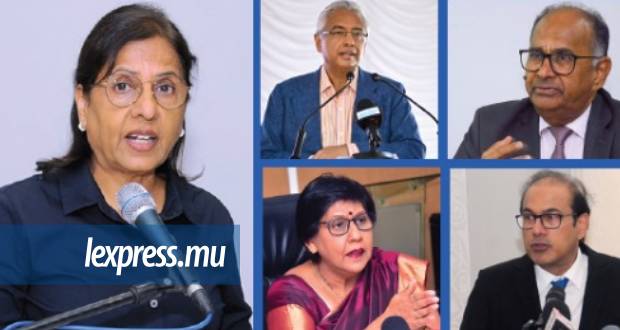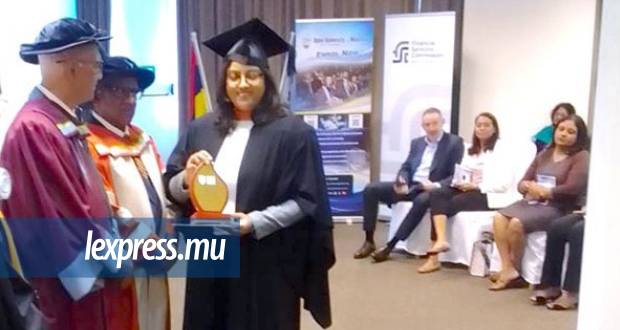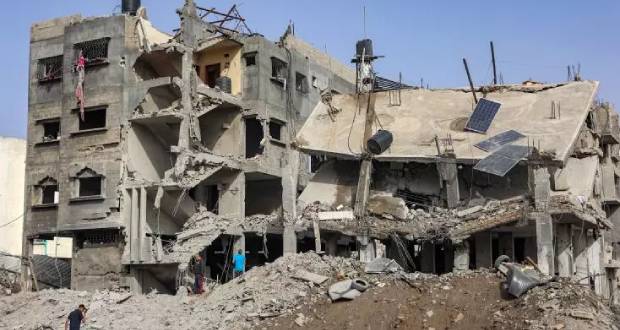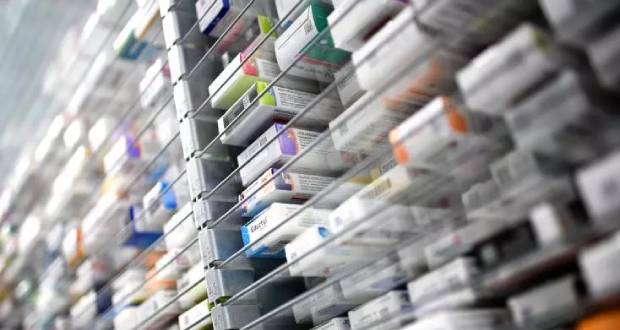Publicité
Landscope: value creation or value destruction?
Par
Partager cet article
Landscope: value creation or value destruction?

One of the virtues of dynamic democracy remains the uncompromising concern to keep the people informed and involved in the conduct of public affairs and, in particular, at the heart of national development beneficial to their well-being and in response to their rightful aspirations. On this premise, Landscope makes it a point to regularly apprise all stakeholders of the evolution of its projects. For one, in the planning, development, phasing, market and public consultations as well as the pricing of such a large-scale project as Côte d’Or City, world-recognised best practices have been followed.
In fact, by any standards, Côte d’Or City is a highly complex project, the type of which has never been envisaged in Mauritius. Its conceptual design has required the highest level of expertise, professionalism, teamwork and public consultation. The study of world best practices in city-building has allowed us to stay clear of mistakes made in previous large-scale real estate projects like Tianli, Jin Fei, Neotown and Ébène Cybercity. The adoption of a professional approach has given us access to various business strategies which have allowed similar state-owned land development enterprises, in other parts of the world, to become value creators of public assets.
A champion of public consultations
The high quality of the technical studies and the business strategies included in the master plan are not solely the result of the hard work of the multi-disciplinary team consisting of urban planners, civil engineers, road engineers, landscape architects, land economist and other real estate specialists who have toiled on the project, but they are also the result of transparently inclusive public consultations that Landscope has conducted with the civil society at large. The Côte d’Or City happens to be the only project which has benefited from such wide consultations with the public over a three-day workshop and an awareness campaign through the social media: Facebook, LinkedIn and other means to tap into the collective intelligence of the Mauritian society.
With a view to creating a space for an open dialogue on city-building, our motive is to regularly update the public on this national project. In this spirit, at regular intervals, the progress of the planning and design of Côte d’Or City has been the subject of press articles. Consequently, it is now common knowledge why Côte d’Or needs to be a distinctively inclusive agglomeration offering economic, social and cultural diversity. This compact, walkable and pedestrian-friendly, mixed-use and mixed-income model has been acclaimed as a response to fresh national aspirations.
Land-financing of the first phase
The objective of the present article is to communicate on the first phase of the Côte d’Or City and the financing of its first phase through the sale and lease of its highly valued land. The first challenge of a project of this nature is to generate the funds needed to provide quality services, both onsite and offsite, for the 150 acres of its first phase. The onsite services include the interior roads comprising a hierarchy of boulevards, streets, roads and alleys, water supply and distribution, storm water drainage and sewerage, electricity, and telecommunications networks but, most importantly, the cost of urban infrastructure for civic amenities and facilities such as schools, parks, boulevards and other categories of civic infrastructure.
The offsite works relate to all the infrastructure needed to connect Côte d’Or City to the rest of the country by Metro Express, highways, road connectors, roundabout and bridges and, under normal circumstances, should be financed by government to the tune of Rs 500 million, while funds amounting to some Rs 10 billion will be required for future offsite works such as connection to the Metro Express and improvement to the existing road network.
The financing of the Côte d’Or City first phase onsite infrastructure can come from four sources: (1) a grant from government, (2) borrowing by Landscope (3) investment by a subdivision developer and (4) from the sale and rental of land. The first two options, however, are now not feasible due to the high national debt level.
The third option of allowing a subdivision developer to take indirect or direct control of the first phase of the Côte d’Or City is ruled out as Landscope would be surrendering its key two-fold regulatory responsibilities pertaining to (a) the allocation of prime government land and (b) ensuring adherence and compliance of all real estate projects to the Côte d’Or City master plan, its regulating plan and its form-based code. In fact, this option of putting land in the hands of a subdivision developer was also ruled out when Landscope decided to undertake the comprehensive and detailed studies at the cost of Rs 80 million, involving a detailed master plan with the regulating plan, the transect defining the density of the developments and the form-based code with the uses, bulk and massing and for each lot of land.
In any event, this third option would result in a whole zone comprising contiguous lots of land to be allocated to a single developer with the catastrophic consequence that the public roads, the boulevards, the streets, alleys and right of way between these individual lots, the squares, the plaza, the linear parks, community gardens, the pedestrian walkways, the cycle and jogging tracks and the expected Metro Express urban terminal which, as per the master plan and the regulating plan, are all intended to be open public spaces, would have been privatized. By way of comparison, can one imagine that the Place d’Armes would become a private domain?
The fourth scenario, which involves the sale or rental of land whose value will be greatly enhanced by urban infrastructure investment and the zoning change from agricultural to commercial use, is the only option which has been retained in the Expression of Interest to capture the Côte d’Or City land value gains. Under this option, Landscope is “exchanging” part of its land assets for urban infrastructure assets thereby adding more value to its land bank of 2,000 acres.
Land valuation
The Expression of Interest, in which some 60 promoters participated, mentions that the land valuation exercise will be conducted to determine the market value of the land. Landscope’s land at Côte d’Or City has the highest potential and is already highly priced, with the latest sale of land in close proximity having been concluded at Rs 25 Million per arpent. It is therefore expected that the land price per acre to be proposed to the developers for the first phase will be higher than the Rs 25 million per acre obtained for residential uses. The value of Landscope’s land will be totally independent from the agricultural price of land not only because of its strategic location but because there is a public policy to develop Côte d’Or as a “Ville Citoyenne”.
In the assessment process, the valuation of the land will be based not only on the usual methods of analysing the selling prices of similar land in the vicinity but they will adjust the value of each lot taking into consideration the mixed-use zoning regulations and the high density which the regulating plan has allowed. There will be major adjustments due to variations in density which is allowed within the 150 acres of the first phase.
It will be typical to observe a very steep land-price gradient, in which land-value increases quite steeply as one approaches the centre of the Côte d’Or City. For example, it will not be irrational to estimate that the value for plots of land within a radius of 200 metres of the centre of the Côte d’Or City could reach the figure of Rs 50 million per acre. This gives an indication of the potential for Côte d’Or City to generate public value through the increase in the value of its land.
Unlocking the land value of Côte d’Or
Apart from generating revenue upfront from the sale and renting of land for its first phase, Landscope will need to continuously invest in its urban infrastructure. The ability of Landscope to finance the needed urban infrastructure will depend in large part on the adoption of a business model to generate land values over the whole lifetime of the project and thereafter capture the bigger portion of the value gains and channel them into its urban infrastructure.
If Landscope has a poorly designed land value creation model, as was the case in Ébène Cybercity, this will impair its capacity to develop the much-needed urban infrastructure both onsite and offsite and stifle its Côte d’Or land market. Landscope will not be able to rely on Government grant for the offsite works. The Rs 500 million voted in the recent 2019-2020 Budget should be an exception taking into consideration the level of our national debt. For its future phases, the Landscope’s land value generation model should allow even Landscope to borrow some bridging finance for a short period and then repay the debt through land sales once the urban infrastructure of the first phase is in place.
Re-Capture of value by Landscope
There will always be a temptation to divert into private hands Landscope’s land-value gains which were triggered by the master planning of the Côte d’Or City, the construction of offsite and onsite urban infrastructure. Landscope’s land-backed financing of urban infrastructure which is the only option envisaged in the Expression of Interest will be vulnerable to legal or political acts which can change the rules of the game defining how the surplus from Landscope’s land value should be allocated.
Government has constructed a state-of-the-art sports complex at Côte d’Or that will host the “Jeux des îles de l’océan Indien 2019” at a cost of Rs 5.5 billion. There are plans to build a police academy on 25 acres of land. All these public investments have considerably increased the land value of Landscope’s 2,000 acres land bank. Government is also going ahead with the construction of a medical hub at Côte d’Or City. This hub will include an Eye Hospital, an Ayush Hospital, a Central laboratory and a drug warehouse. Government would not have made such an effort were it not for the development of a “Ville Citoyenne”.
It will be only fair that land-value gains due to Landscope’s urban infrastructure investment as well as government’s investment in such infrastructure like the multi-sports complex be “captured” all or part of the land-value gain and that these “captured values” be then used to pay for the future urban infrastructure including the extension of the Metro Express to Côte d’Or.
Many would be surprised by the pertinence of this quote from the first Habitat Conference on Human Settlements: “The rise in land values resulting from... public investment... must be subject to appropriate recapture by public bodies” (United Nations 1976: rec. D.3 [b]).
As we have recently found for Ébène Cybercity, its value capture model is simply not able to provide any funding to meet the urban infrastructure needs for the Ébène Urban regeneration project announced in the 2017-2018 Budget. Landscope needs to rethink the funding balance between those who will directly benefit from the urban infrastructure of Cote d’Or City and broader taxpayers. The users and the direct beneficiaries of Cote d’Or City will have to take a greater share of the funding burden, releasing taxpayer rupees to meet the challenges of our high national debt .
Gérard Sanspeur
Chairman Landscope Mauritius Ltd
Publicité
Les plus récents






